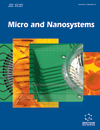
Full text loading...
Spanlastics belong to a newly established class of nanovesicular carriers, critical in contemporary systems used to deliver active pharmaceutical ingredients, alleviating most of the drawbacks of conventional delivery techniques. The principal components include non-ionic surfactants and edge activators. Owing to their high deformability, spanlastics will be able to encapsulate various therapeutic molecules, from hydrophilic to lipophilic ones, which will enable them to deliver to all kinds of biological membranes. This unique property makes them an ideal candidate for several routes of administration, such as topical, transdermal, and ocular applications. As an example, formulation techniques include the optimization of thin film hydration and ethanol injection to improve the encapsulation of drugs and the stability of vesicles. The basis of their efficacy lies in critical physicochemical parameters, such as vesicle size, zeta potential, and drug entrapment efficiency. Informatics in spanlastics research has emerged as a promising way to improving the bioavailability of peptides, proteins, and vaccines, thereby improving the critical challenges in drug delivery systems. This review provides an overview of their formulation processes, diverse applications, and contributions to advancing pharmaceutical and biomedical sciences. This review also emphasizes the role of spanlastics in dermatological therapy.

Article metrics loading...

Full text loading...
References


Data & Media loading...

